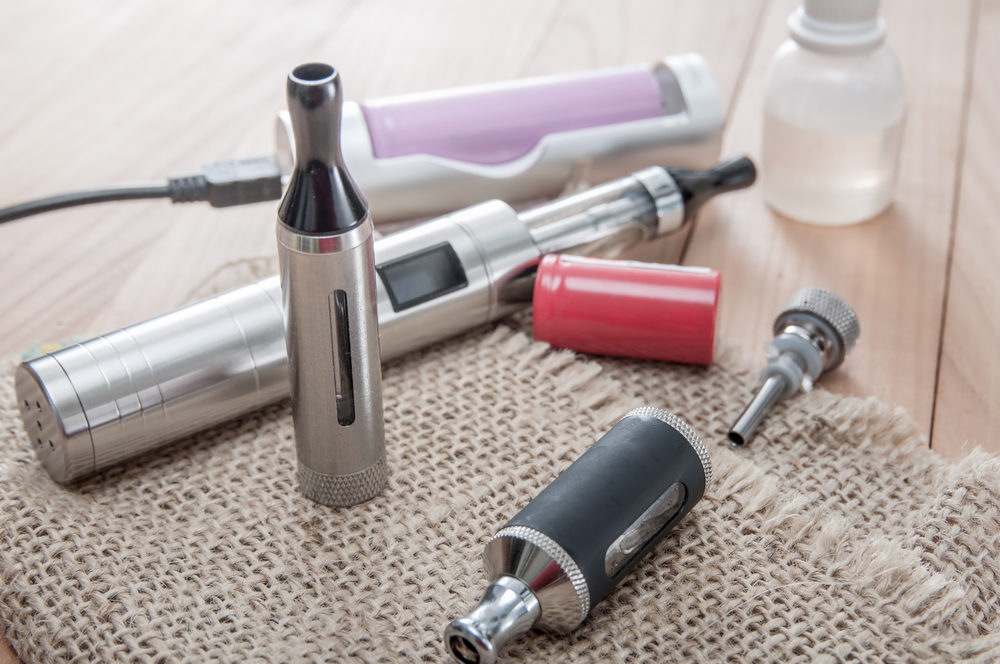Modified Vape Kits Increase Risk of Fire, Explosions and Other Problems For Teens, Young Adults: Study
Teens often try to modify vapes by recharging disposable e-cigarettes, or putting cannabis into oens designed only for nicotine, researchers warn.

A new report highlights the risks that teens and young adults may face by attempting to modify vape kits, by altering the e-cigarette devices for uses they were never designed for, such as recharging disposable pens or attempting to put cannabis into tanks designed for nicotine and other e-juices.
Federal health officials have been warning for years that vaping has become a full-blown health epidemic among teens in the U.S., with roughly 10% of high school students reporting that they have used e-cigarettes, according to data from the 2023 National Youth Tobacco Survey.
In a study published this month in the medical journal Pediatrics, researchers warn that roughly 40% of teens and young adults in the U.S. who vape will attempt to modify or change their e-cigarette devices in ways that may boost nicotine levels, or result in an increased risk of severe burns or lung damage.
Teens and young adults also commonly modify e-cigarettes so they can vape marijuana, according to a group of researchers led by Dr. Grace Kong, of the Yale School of Medicine’s Department of Psychiatry, who warn that these vape pen modifications are not recommended by manufacturers and may lead to harmful side effects.
Vape Pen Explosion Risks
Since vape pens began to emerge as an alternative to tobacco cigarettes, federal health officials have been raising concerns about the risk of vape pen explosions stemming from overheating lithium ion batteries, which have resulted in reports of severe burns, fires and deaths, often linked to low-quality devices or products that were modified from their original intended purpose.
As a result of the explosions and problems, the U.S. Food and Drug Administration (FDA) mandated all new nicotine products must go through premarket tobacco applications (PMTAs). Manufacturers have also been provided FDA guidence on how to make vapes safer, by reducing the risk of battery explosions and preventing toxic nicotine dosing, two side effects that can also occur from modifying vapes in ways they weren’t intended to function.

Do You Know About...
Childhood Diabetes Lawsuits Against Junk Food Industry
Lawyers are now pursuing financial compensation for families of children diagnosed with Type II diabetes, fatty liver disease and other chronic illnesses caused by addictive and harmful substances in ultra-processed foods.
Learn MoreVape Modding Concerns
In this latest study, Kong and her team focused on teen and young adult habits of modifying e-cigarettes, also known as “modding” or “hacking” vapes. The study focused on 1,000 teens and young adults who reported vaping in the past month. They completed a survey on the awareness and use of vape modifications including refilling rechargeable pods, recharging disposable pods, refilling disposable pods, rewicking, modifying liquids like changing propylene glycol or nicotine, combining nicotine liquid with cannabis liquid, and putting cannabis liquid into vapes.
The most common modifications by teens and young adults involved refilling rechargeable cartridges or pods that weren’t meant to be refilled. According to the data, 40% of teens and young adults have tried refilling disposable pods, while 36% of teens and young adults tried recharging them.
Even if they haven’t tried it, half of teens and young adults said they were aware of that modification. However, disposable pods are meant for limited use and not to be refilled. Like many of the other modifications explored in the study, this modification can cause the battery to overheat, which can cause burns, and higher exposure to nicotine and other chemicals.
Nearly 65% of teens and young adults said they learned how to “hack” or modify vapes from their friends. Another 47% said they learned modding from websites and vape shops, with many participants indicating they learned the modifications at vape shops when there still under the age of 21.
Many of the participants said they vape both nicotine and marijuana, with nearly one-quarter indicating that they modify their vapes to put cannabis into devices intended for nicotine.
The data also showed even when participants hadn’t tried certain modifications, they were usually aware of how to make the changes.
Teens and young adults also said they thought using different modifications would make the vapes less harmful or make the devices more “cool.” The modifications are often popular because they increase nicotine concentrations and help make vapes more accessible and more affordable.
“Findings show that [teens and young adults] are aware of and engage in modifying [vape pens], and typically learn about these behaviors from friends, digital media, and retailers,” concluded Kong in the study. “Future research should examine whether vaping-modified [e-cigarettes] confers respiratory harm and nicotine toxicity. Prevention and educational efforts should include the risks of modifications such as explosions and burns, as well as address cannabis vaping, given its high prevalence among [teens and young adults] who vape nicotine.”
Researchers indicate further regulations are needed to focus on websites and vape shops to prevent the promotion of modding. They also urged manufacturers to be aware of how consumers are modifying vapes, and to consider future safeguards to prevent such efforts.





0 Comments